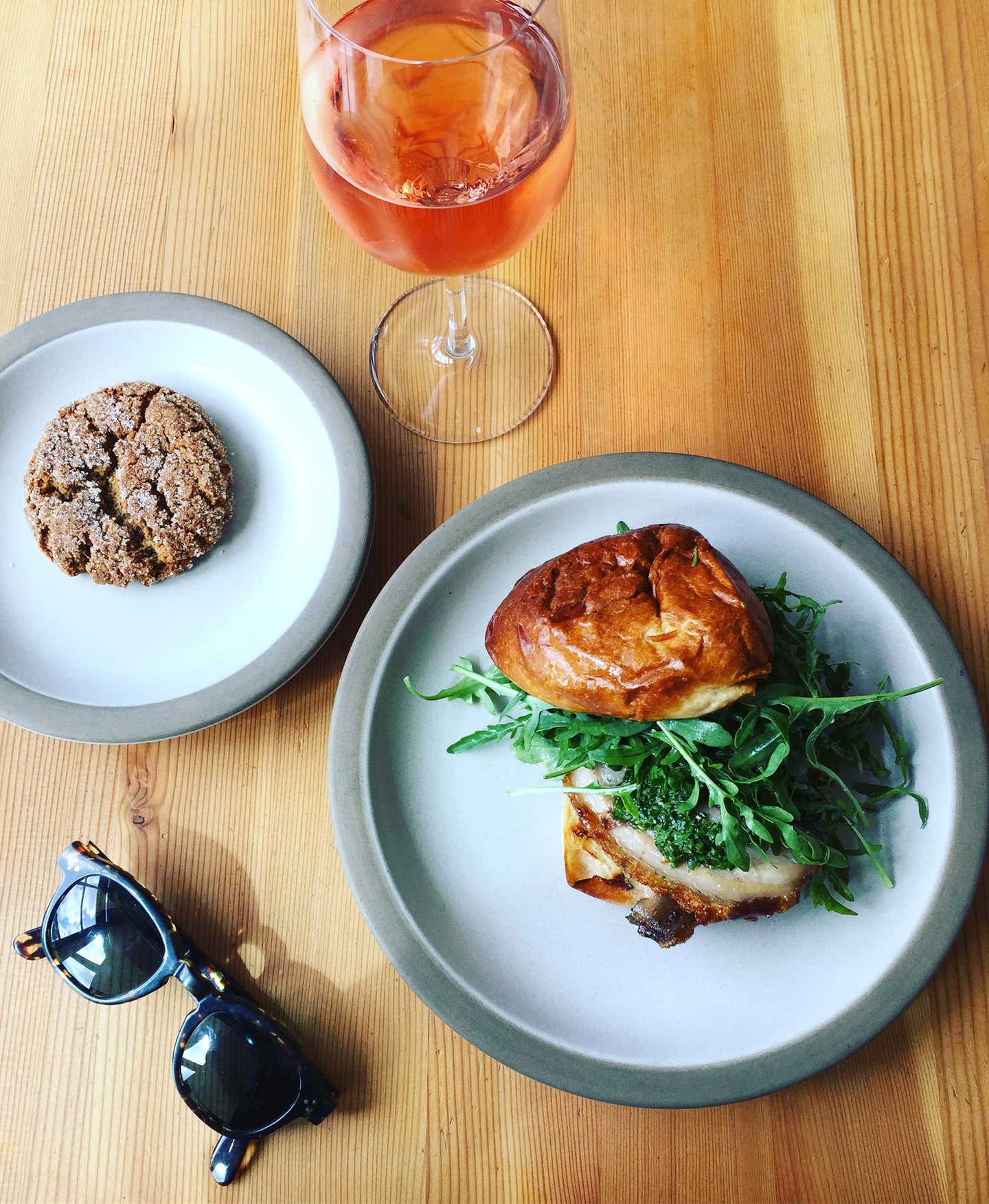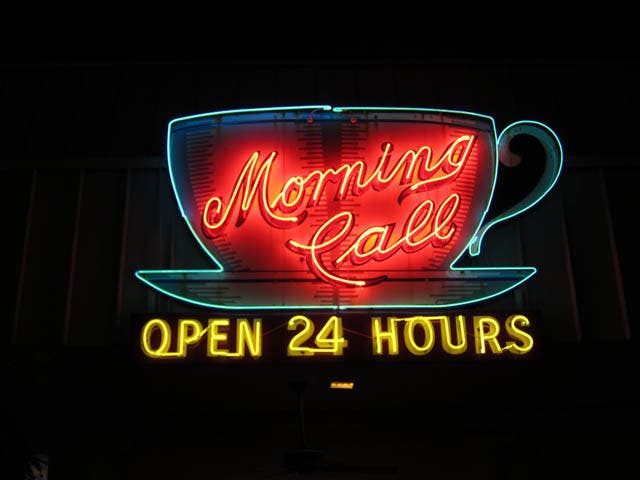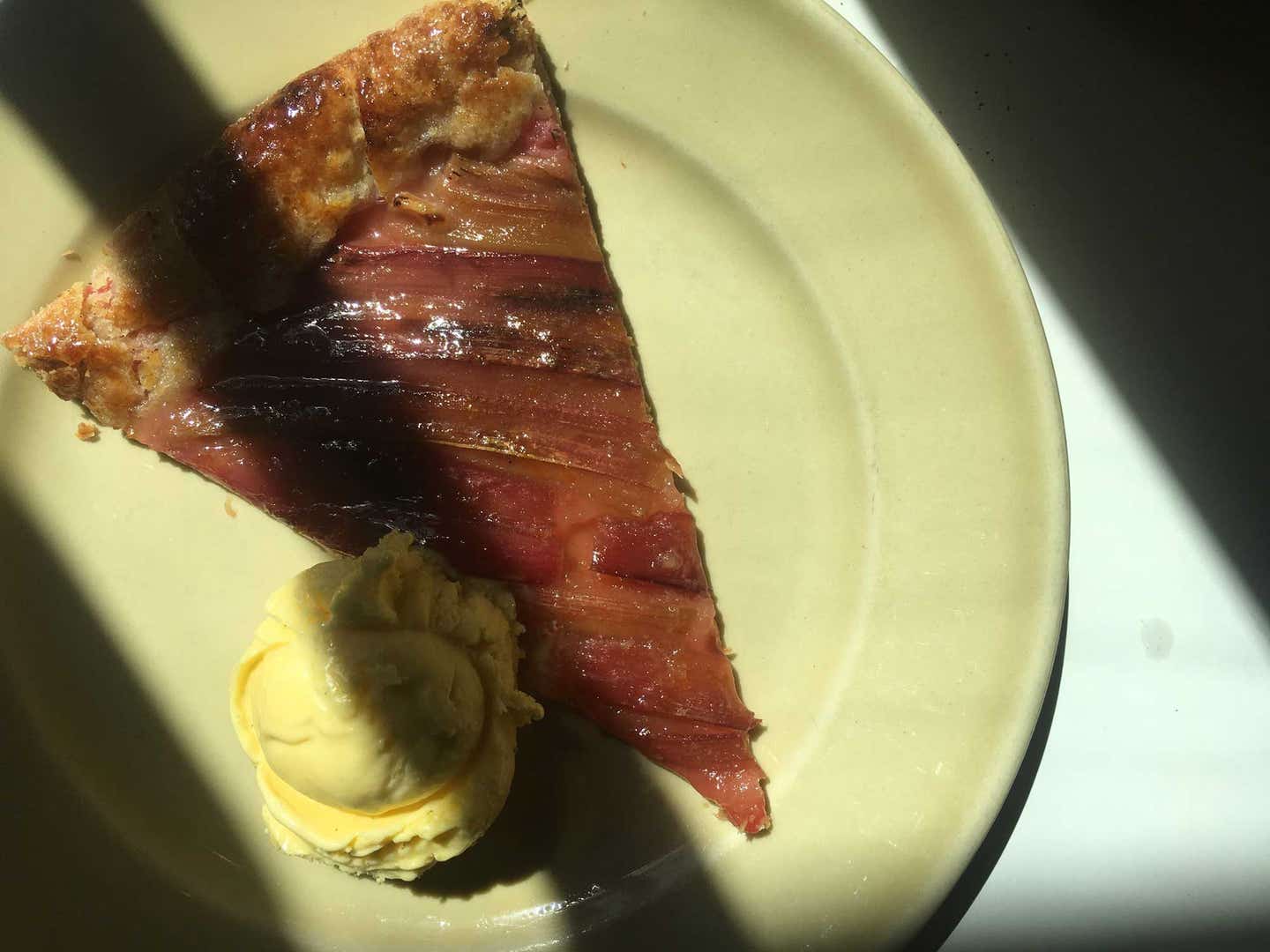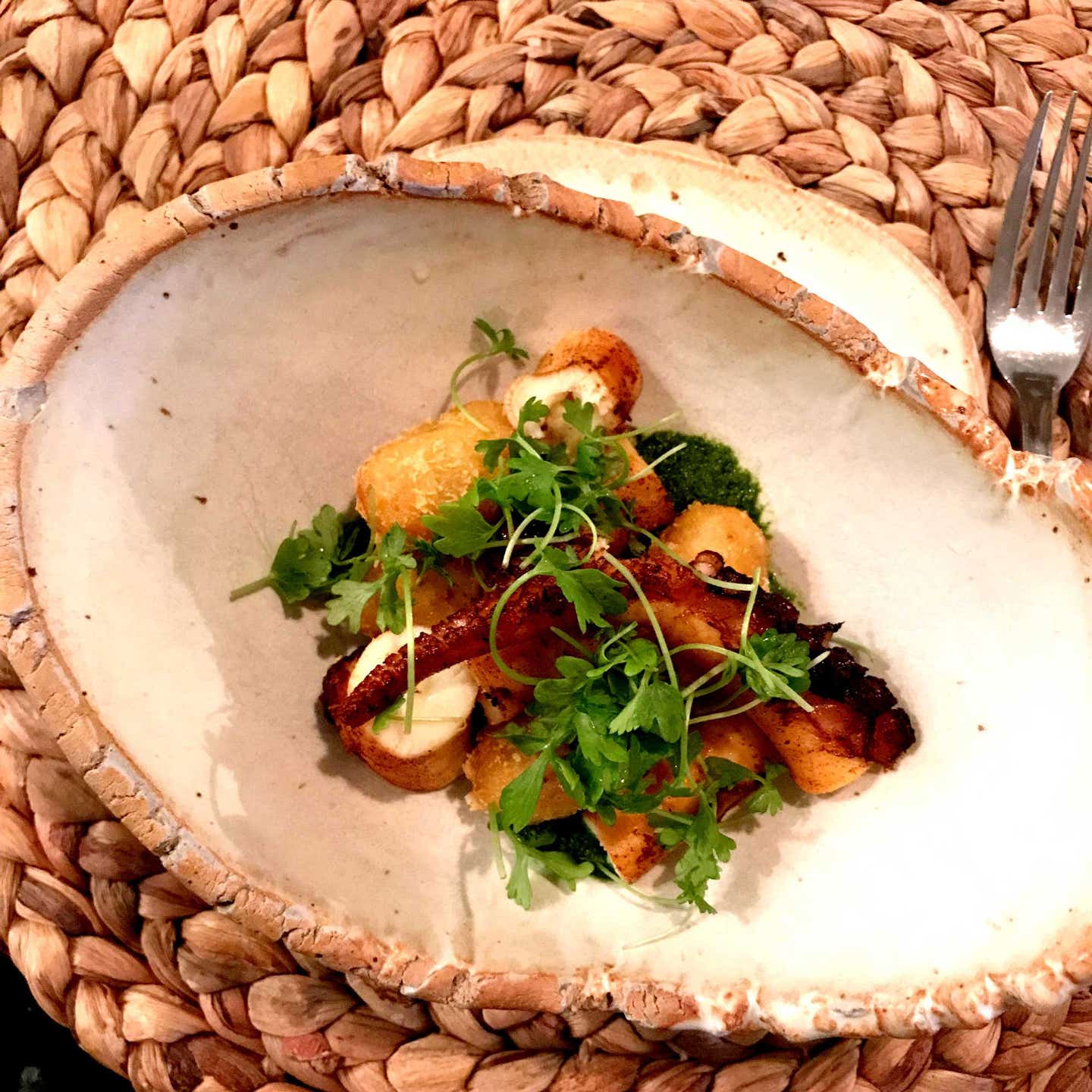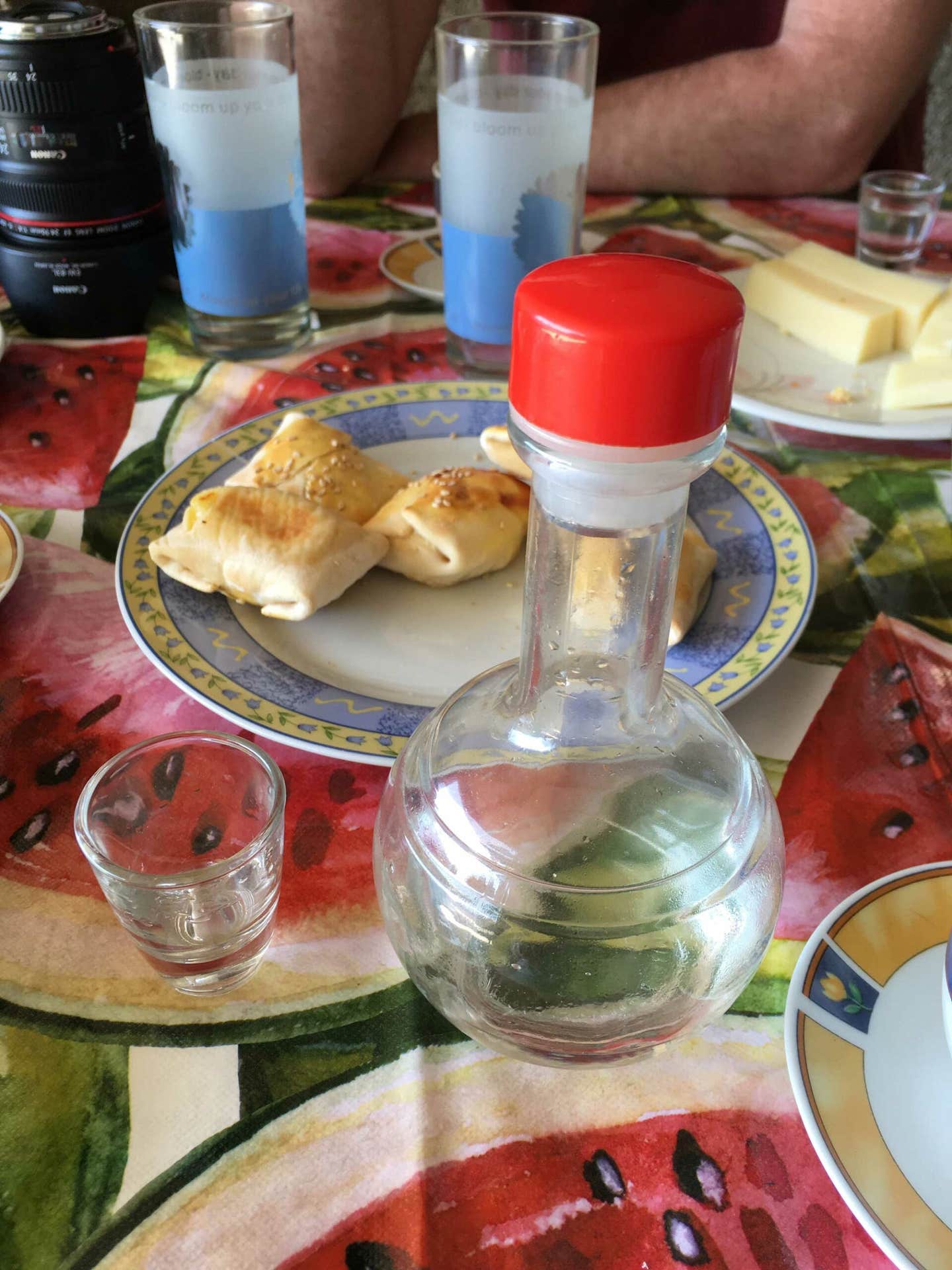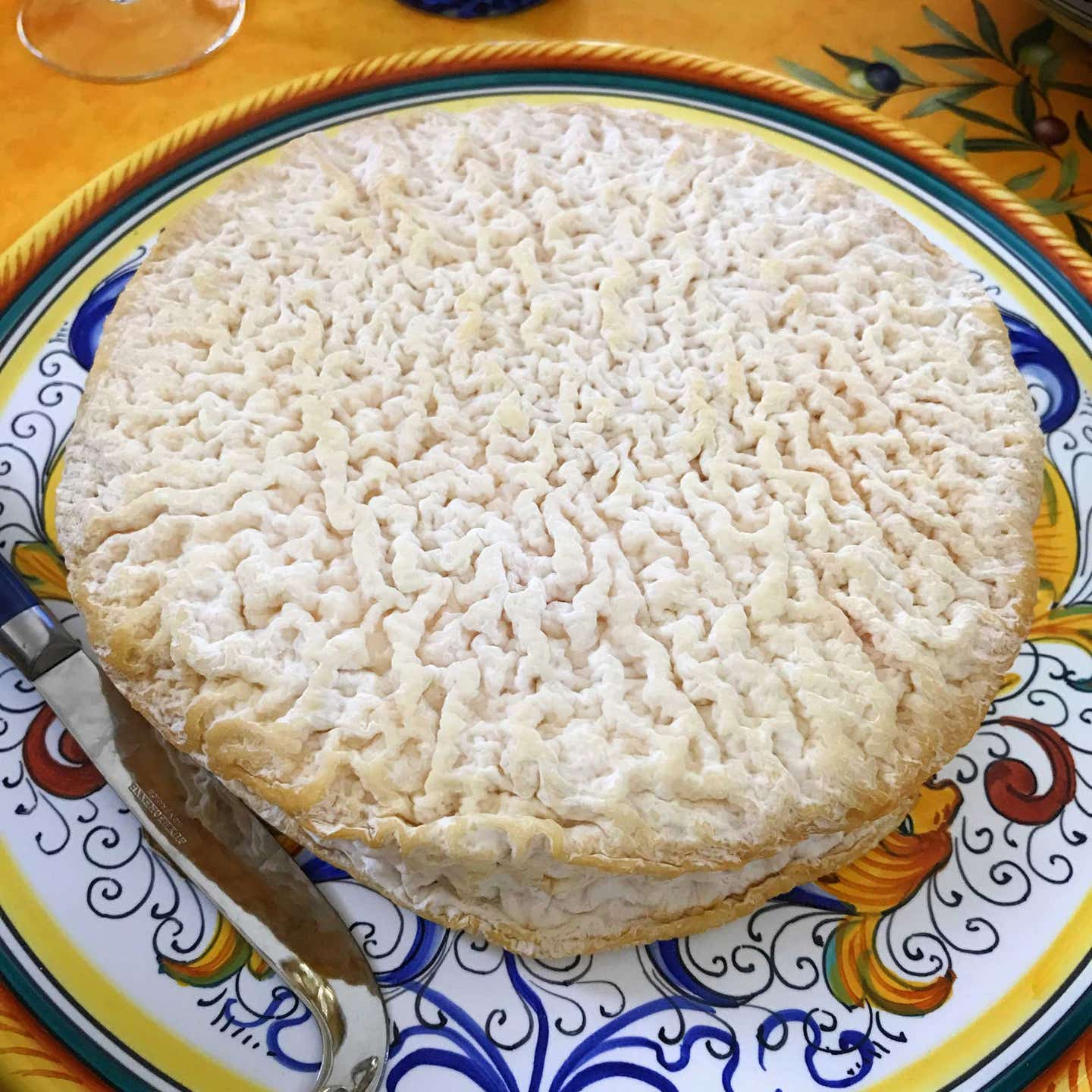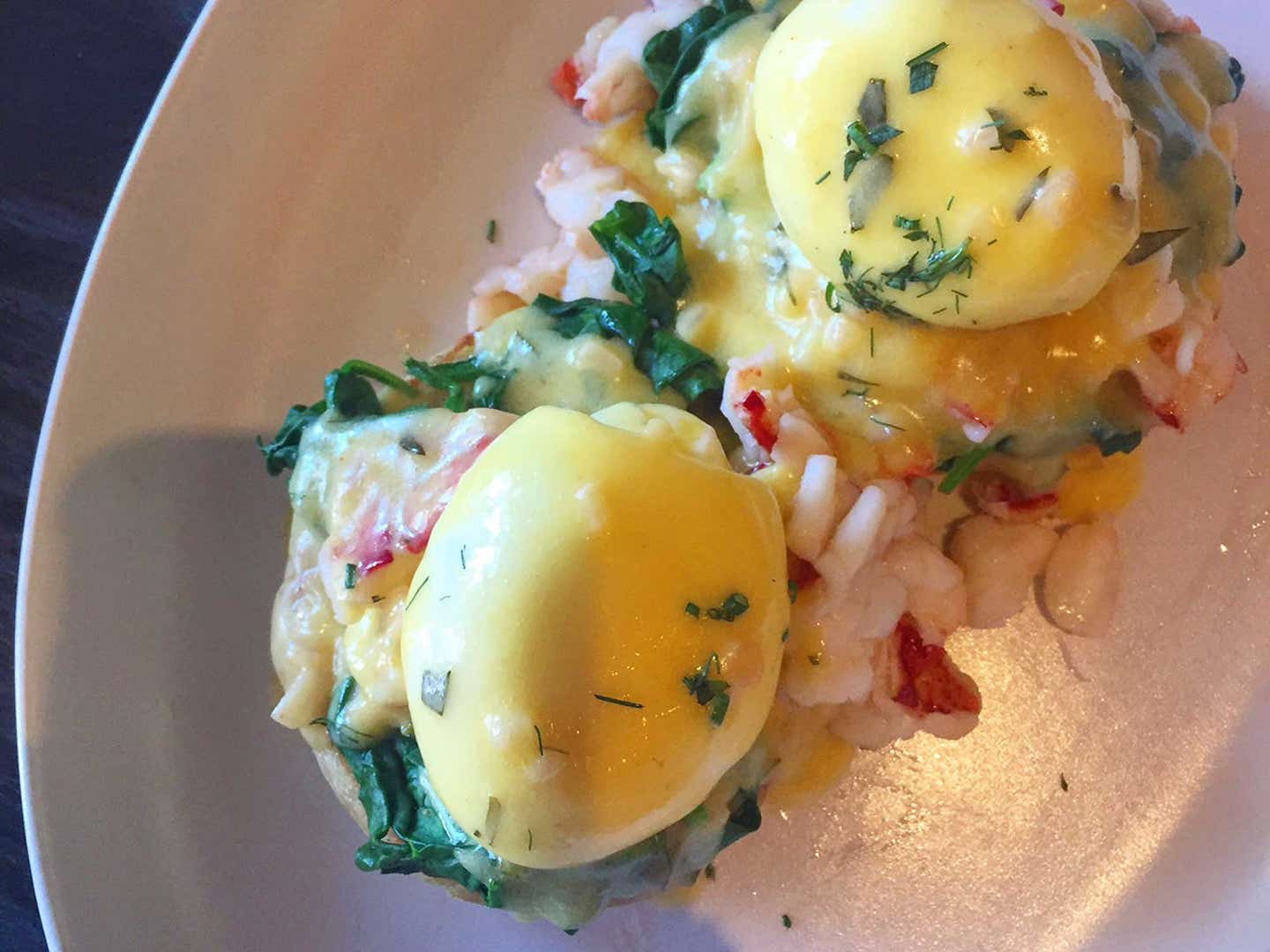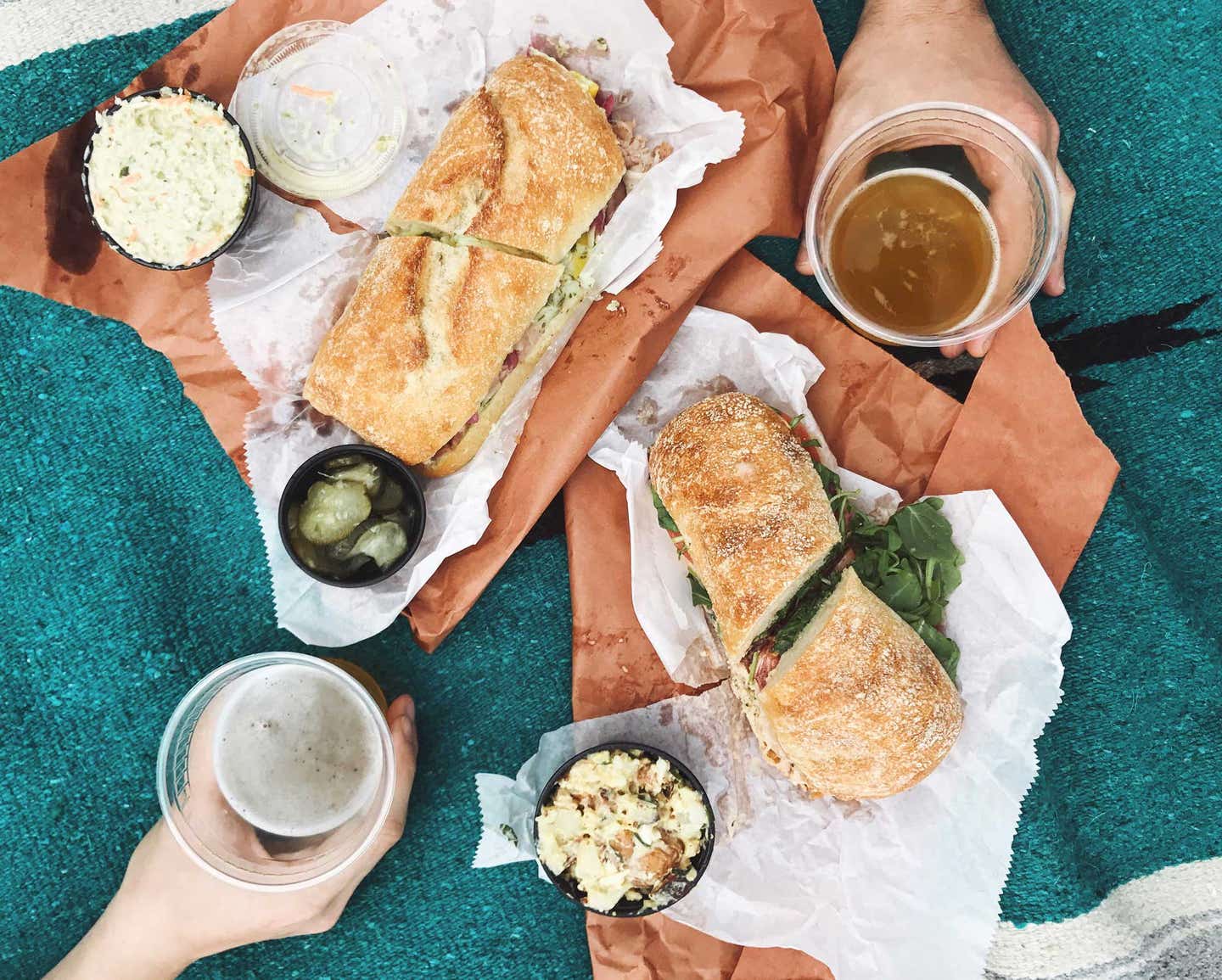
Where SAVEUR’s Editors Traveled in April
We ate and drank our way through Alaska, New Orleans, California, and Greece
At SAVEUR, our obsessive quest to unearth the origins of food and discover hidden culinary traditions sends us from our test kitchen in New York City to all the corners of the globe. This month, we traveled to New York for cheese, Alaska for halibut, and Greece for raki with every meal.
If you live in New York City, you probably know at least one person who is debating whether or not they should move to Beacon, an artist's hamlet and Hudson Valley hot spot just 60 miles north. There's Dia, the contemporary art museum, and Storm King, the contemporary sculpture center that covers 500 acres in the mountains.
But there are also ample breweries, taprooms, and distilleries nearby, like Hudson Valley, which might be under construction but they've still got the taps flowing and tables set up for hanging out with a pint of their "Kinds of Light," a sour ale fermented with local chardonnay grape skins. Stock Up has a pop-up here, as well as a brick-and-mortar location around the corner, where, while accompanying a friend up north to hunt for an apartment, we bought freshly sliced bacon to cook for breakfast, and a few sandwiches and a growler of beer to take to Storm King for the afternoon. We're hoping she finds an apartment soon, if only so we have another excuse to take the train up for the weekend. — Alex Testere, associate editor
It's not every day you launch a new cookbook. That's why, in mid April, I headed out to San Francisco to celebrate the publication day of Nopalito, an authentic Mexican cookbook I co-authored with chef Gonzalo Guzmán of Nopalito restaurants. Of course, I ate my bodyweight in ceviche, tamales, and carnitas. But in between visits to the restaurant I found time to eat at some of my other favorites in town.
At the famous Ferry Building, home of San Francisco's biggest and best farmers' market, I swigged cappuccino from Blue Bottle Coffee and a grilled cheese from Cowgirl Creamery, then perused the shrooms at Far West Funghi. At Cotogna, a cozy wood-fired Italian spot, the chefs fed me tortellini with artichokes and guanciale (cured pork jowl) that had me speechless. And at the new-ish Tartine Manufactury, I ended the week on a last lunch of perfectly moist, greasy porchetta sandwiched with sharp arugula, and complemented with a glass of Sonoma rosé. Hey, it was a celebration. —Stacy Adimando, test kitchen director
Oh New Orleans, what a wonderful city in which to become nocturnal for a week, because the music's best at night and Morning Call is open 24 hours a day. You likely know about Cafe du Monde, the tourist-spot-that's-actually-great beignet palace in the French Quarter, but the Metarie-based (and that's Met-uh-ree, or Met-tree, to you) coffee and beignet shop is a terrific local alternative with marble tops everywhere, surly bow-tied servers, and perfectly milky coffee in a bucolic corner of City Park. They may even do better beignets, even at 5 a.m., when I stumbled in for a nightcap doughnut after a hungover breakfast there 8 a.m. the day before. Surrounded by greenery matched only by the actual Louisiana woods, with a pile of light-as-air, gently chewy beignets in front of me, and as much cafe au lait as I could drink—yeah, I could see living here. — Max Falkowitz, executive digital editor
It was 8:30 on a Friday evening in Sitka, Alaska. I was out on the water with a local writer working on an upcoming assignment. The sun was setting over snow covered Mount Edgecumbe, and the harbor breeze was cold but refreshing, and helped keep our Denali Brewing IPAs chilled to perfection. The boat dramatically swayed back and forth as we pulled two 50 pound halibut out of the water. It didn't take long for me to get into the routine of things up in this remote, northern part of the country. There are a lot more options for dinner if you just go out and catch it yourself. A few hours later, back at the writer's home, candles were lit, the halibut cooked, and the wine was poured for the perfect Friday night dinner. — Michelle Heimerman, photo editor
In my mind, Berkeley has always been a village on a hill bursting at its borders with heirloom tomatoes, watercolored apricots, and lettuces so delicate, they could be stitched into silky shirts and headscarves. I'm not sure how or when this idea implanted itself, but I think it must have something to do with Chez Panisse. Because, in the topography of my imagination, Chez Panisse sits at the pinnacle of the village hill, windows glowing warm, baking pie smells wafting through them and out into the wild California air. (Begrudgingly, I am a romantic.)
Earlier this month, on the way to Napa, I stopped through Berkeley for the first time in order to fulfill a decade-long desire to sit in Chez Panisse's treehouse-of-a-café and order those whispery lettuces. And because I'd wanted to eat there for so long, I was anxious that it might not be as good as I'd dreamed up. As we departed the San Francisco airport, I picked a fight with my boyfriend over which route to take. I fussed over my hair, parting and re-parting it in some trance of cosmetological magical thinking. I even changed my shirt in the car rental parking garage, because in my mind's eye, I knew what one should wear to Chez Panisse.
It wasn't necessary to have worried. There's a reason Chez Panisse remains beloved. After all these years of food evolution and revolution, it's still the platonic ideal of an American restaurant. Simple and elemental, it's still the best version of America's food culture. There was crisp, peachy Bandol rosé and those whispery lettuces dipped in buttermilk. There were roasted beets and a guinea hen with swiss chard that tasted like Christmas, all cloves and oranges. There was a slice of pillowy ginger cake and a crumbly wedge of a rhubarb tart. And it lived up to ten years of anticipation.
Feeling buoyed by the dewy East Bay air and a second glass of Bandol and the sun coming through the boughs of an araucaria tree, I was very happy to see that some places and people and things (and lettuces) can live up to all of one's expectations. — Leslie Pariseau, special projects editor
With Friday-night tickets to see the Jayhawks at Tarrytown Music Hall, a jewel box of a theater (built in 1885 by a chocolate maker), my husband and I took a train from Grand Central Station in Manhattan for the 50-minute ride north up the Hudson River. We weighed our dinner options—build-your-own-burgers, BBQ, tacos, even Korean—before deciding to treat ourselves to the Twisted Oak, a New American bistro some Google reviewers compared to Dan Barber’s Blue Hill.
We settled in at the cozy bar and started off with excellent cocktails: smoky-spicy mezcal, grapefruit, serrano chile, agave, and Luxardo maraschino liqueur for me; bourbon for him. We started with chef-owner Michael Cutney's perfectly tender octopus complemented by spicy nduja tater tots, preserved lemon, and salsa verde. I followed up with duck lasagna with braised wild greens and bechamel, topped with a fried egg, an appetizer portion but plenty satisfying and rich. My husband loved the new-to-the-menu allium risotto, with ramps, spring onion blossoms, and Sprout Creek Bogart, a raw cow's-milk cheese. As a grace note, everything was served on lovely pottery. — Donna L. Ng, copy chief
Before I left for Crete, I got the same warning from everyone: Prepare to drink lots of tsikoudia. Also known as raki, this drink is everywhere on the island, and it often popped up unexpectedly. One farmer poured homemade raki into shot glasses on the hood of his truck, right in the middle of his field. Another cheesemaker served us raki with plate after plate of cheese (it was 10 in the morning). And one night, I watched a group of Cretan men make it in a big copper pot as we ate. There was a lot of discussion and arguing about how much water to add, because the initial concoction is 80% alcohol. They placed the vat of alcohol in the middle of the table and served it out of a smaller saucepan, continuing to argue about what should be changed to make it taste better, but it didn't stop them from filling glasses and passing them around—because you can't leave until all the raki is gone. — Katherine Whittaker, assistant digital editor
I don't get out of the city as often as I'd like, but when Gwen and Patrick Apfel invited a handful of us Saveur-ites to their historic Upstate New York farm for a tour of their cheesemaking facilities early last month, I jumped at the offer. Cochran Farm was originally the home of Surgeon General John Cochran, who served under George Washington during the American Revolutionary War, purportedly saving the life of The Marquis de Lafayette—twice.
The Franco-American alliance lives on at the General's former residence; Patrick and Gwen met in business school and worked in tech all over the U.S. and abroad, before, while on assignment in Patrick's native France, they decided to shift gears and enrolled in a cheesemaking course at a technical school in Burgundy. Today, they produce some of the best French-style chèvre around, using Alpine goat milk from a local Amish farm. As Gwen walked us through her cheesemaking facility—a pristine laboratory tucked discreetly inside an 18th century barn—Patrick prepared a perfect country lunch of green salad, crusty bread, mineraly Loire wine, and the prettiest rippled white tomme any of us had ever seen. — Kat Craddock, test kitchen assistant
I don't brunch. I don't like brunch, I don't see it, and I don't respond to it. Doesn't it make more sense to just sleep in? However, when I travel, I prefer to do as the locals to. So, when I visited Los Angeles this month, I decided to drag myself out bright and early at 1pm to indulge in that mid-afternoon tradition of booze and eggs. Luckily, the brunch standards at Wolf in LA were well-worth the effort: crispy potatoes sitting on an aji amarillo aoili, perfectly cooked steak and eggs, pancakes nestling bananas and topped with strawberries, and just for fun, these eggs Benedict upgraded with tender chunks of lobster. It's no surprise: the chef-owner at Wolf is Marcel Vigneron, of Top Chef fame, who opened Wolf last year. The best part? The restaurant is 100% zero food-waste, and that's the kind of business I can get behind at any hour of the day. — Dan Q. Dao, deputy digital editor
Keep Reading
Continue to Next Story
